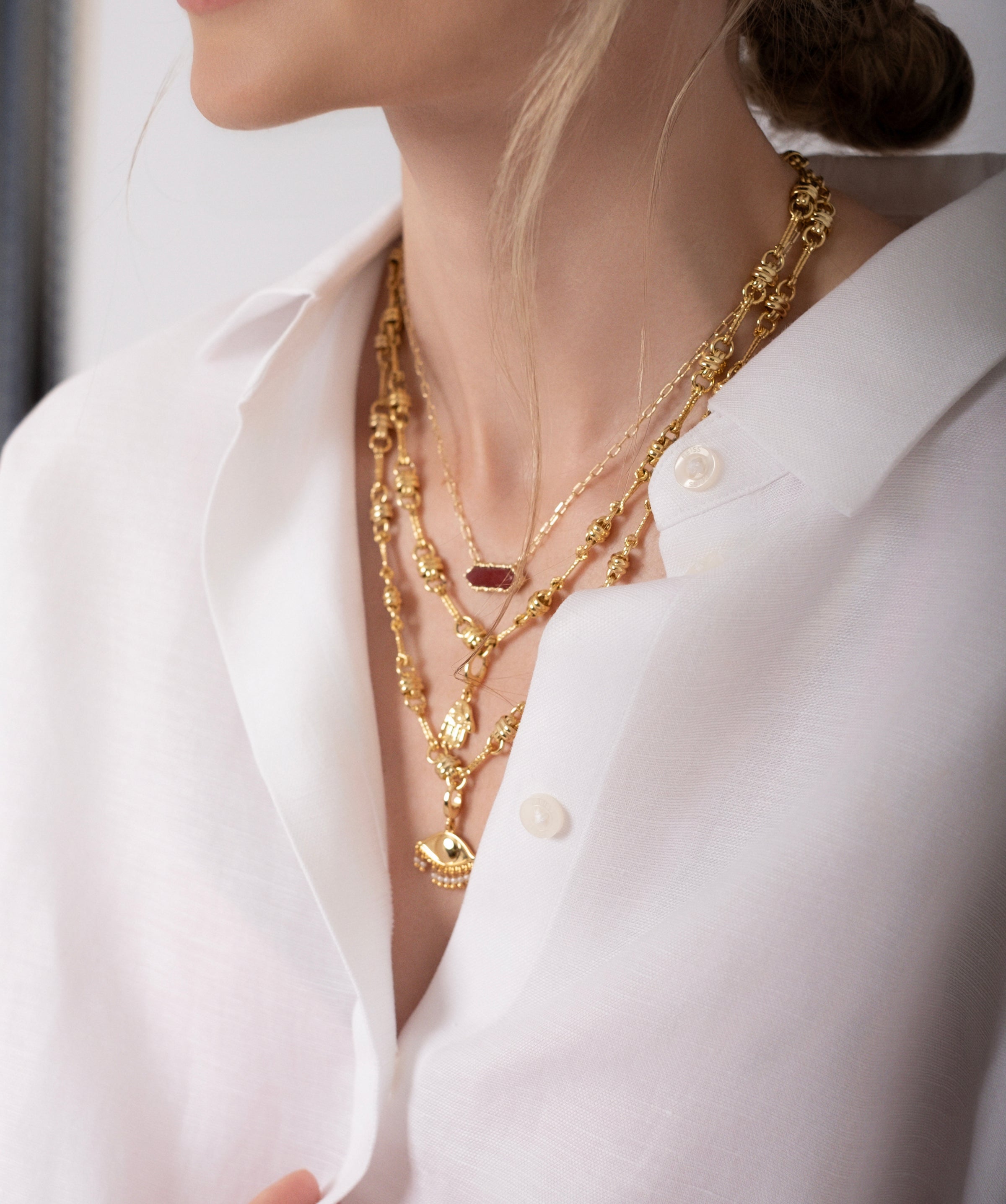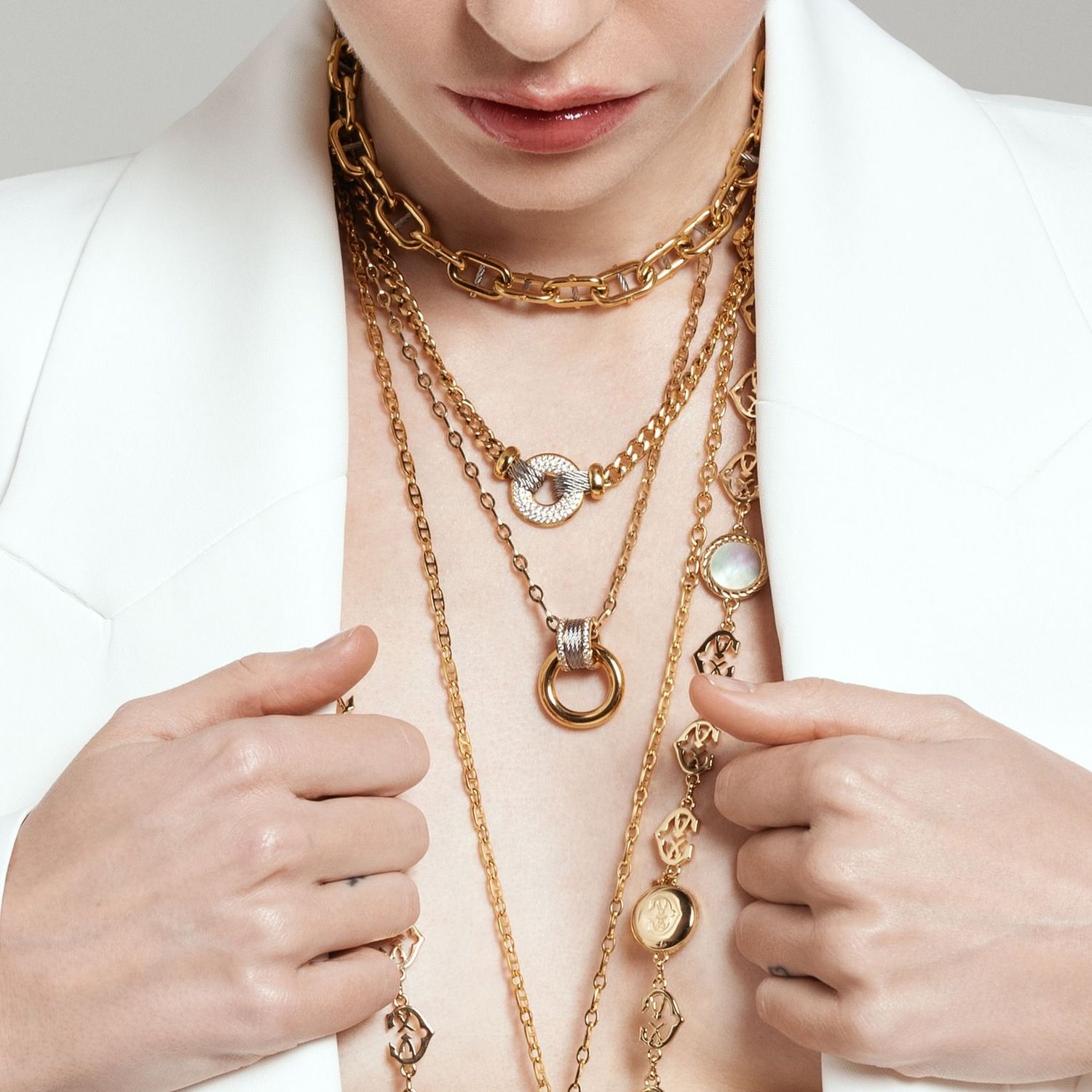Introduction: The Secret to Perfectly Layered Jewelry
Layering jewelry is one of the chicest ways to express your personal style. From stacked necklaces to mixed-metal bracelets, it creates dimension, texture, and individuality. But here’s the catch—layering is also one of the easiest places to go wrong. Whether it’s tangling chains, mismatched proportions, or clashing styles, even the most fashion-forward jewelry lover can make small mistakes.
Today, we’re breaking down the jewelry layering tips you didn’t know you were breaking—and showing you how to fix them.

Mistake #1: Ignoring Chain Lengths
One of the biggest layering errors is stacking necklaces that all sit at the same length. This not only creates clutter but also increases the risk of tangling.
✅ Pro Tip: Use varied chain lengths—like a choker, a mid-length pendant, and a long chain—to create balance. A set of layered gold necklaces from Malibu Sunday makes the process effortless.
Mistake #2: Mixing Too Many Bold Pieces
Statement earrings, chunky bracelets, and oversized rings can be stunning—but layered all together, they overwhelm your look.
✅ Pro Tip: Choose one focal piece (like hoops or a cocktail ring) and complement it with delicate layers. Browse Malibu Sunday’s Pinterest stacking inspiration for ideas that strike the perfect balance.
Mistake #3: Forgetting About Balance
Layering doesn’t mean piling on jewelry evenly across every part of your body. Wearing stacked necklaces, multiple rings, and heavy bangles all at once can feel too heavy.
✅ Pro Tip: Balance your layers by choosing one main area to highlight—neck, wrists, or fingers—while keeping the rest more minimal.

Mistake #4: Overlooking Materials and Metals
Many people avoid mixing metals, sticking only to gold or silver. Others combine metals haphazardly, making the layers feel disjointed.
✅ Pro Tip: Mixing metals is in—just do it intentionally. Pair gold and silver pieces with similar textures or link styles for harmony. Vogue even highlights mixed-metal layering as a continuing jewelry trend for 2024.
Mistake #5: Not Considering Necklines or Outfits
Your jewelry doesn’t exist in isolation—it interacts with your outfit. Wearing layered chokers with a turtleneck or long chains with a plunging neckline may create awkward proportions.
✅ Pro Tip: Match your necklace stack to your neckline. For example:
-
V-neck tops: Pointed pendants that follow the neckline.
-
Crewnecks: Mid-length layers that sit just above the fabric.
-
Strapless or off-shoulder: Delicate chokers or short stacks.
Quick Guide: Jewelry Layering Do’s and Don’ts
| Do’s | Don’ts |
|---|---|
| Mix chain lengths for depth | Layer all necklaces at one length |
| Balance bold with delicate | Wear all statement pieces at once |
| Intentionally mix metals | Clash textures without thought |
| Match jewelry to your outfit’s neckline | Ignore how pieces sit on fabric |
FAQs: Jewelry Layering Tips
Q1: Can I layer both gold and silver jewelry?
Yes! Mixing metals is chic—just ensure you create cohesion through similar textures or motifs.
Q2: How many necklaces are “too many”?
Most stylists recommend three to four pieces, varying in length, for a polished look.
Q3: What’s the best way to keep layered necklaces from tangling?
Use a necklace separator clasp or layer pieces with distinct chain types.
Q4: Should I invest in sets made for layering?
Absolutely—sets designed to layer (like those from Malibu Sunday) simplify proportions and styling.
Q5: Can I layer jewelry for casual and formal looks?
Yes! Layering is versatile—keep it simple for daywear and add bolder accents for night.
Conclusion: Layering Is an Art—Make It Yours
The beauty of layering jewelry is that there are no hard rules, just stylish guidelines that help you express yourself. By avoiding these common mistakes, you can create combinations that feel intentional, balanced, and chic—whether you’re stacking gold chains for brunch or mixing metals for a night out.
✨ Ready to experiment with jewelry layering? Explore Malibu Sunday’s Amazon collection and get styling inspiration from our Pinterest boards.



















